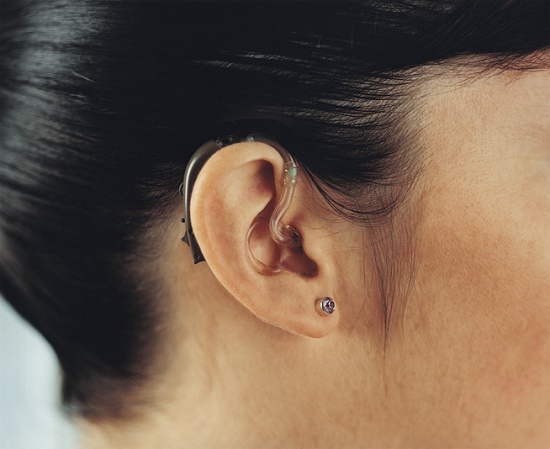
Have you ever had difficulties hearing in a crowded room or restaurant but can hear just fine at home? Do you have particular challenges hearing higher-pitched voices or TV dialogue?
If so, you may have hearing loss, and hearing aids may be able to help you.
But how do hearing aids work exactly? Are they basic amplifiers, or something more complicated?
This week we’ll be focusing on how hearing aids work and how they are a great deal more sophisticated than many people recognize. But first, let’s begin with how normal hearing works.
How Normal Hearing Works
The hearing process commences with sound. Sound is simply a kind of energy that travels in waves, like ripples in a lake. Things cause sound in the environment when they produce vibrations in the air, and those vibrations are eventually captured and sent to the ear canal by the outer ear.
After moving through the ear canal, the sound vibrations strike the eardrum. The eardrum then vibrates, creating and amplifying the original signal which is then transmitted by the middle ear bones to the snail-shaped organ of the middle ear known as the cochlea.
The cochlea is filled with fluid and tiny nerve cells known as cilia. The vibrations transported from the middle ear bones shake the fluid and stimulate the cilia. The cilia then transmit electrical signals to the brain and the brain interprets those signals as sound.
With the majority of cases of noise-induced hearing loss, there is damage to the cilia. As a result, the inbound signal to the brain is weakened and sounds appear quieter or muffled. But not all sound frequencies are evenly weakened. Generally, the higher-pitched sounds, such as speech, are affected to a greater extent.
In a loud setting, like a restaurant, your ability to hear speech is weakened because your brain is acquiring a weakened signal for high-frequency sounds. At the same time, background noise, which is low-frequency, is getting through normally, drowning out the speech.
How Hearing Aids Can Help
You can see that the solution is not simply amplifying all sound. If you were to do that, you’d just continue to drown out speech as the background noise grows to be louder relative to the speech sounds.
The solution is selective amplification of only the sound frequencies you have a difficult time hearing. And that is only feasible by having your hearing professionally assessed and your hearing aids professionally programmed to enhance these select frequencies.
How Hearing Aids Selectively Amplify Sound
Present day hearing aids contain five internal parts: the microphone, amplifier, speaker, battery, and computer chip. But hearing aids are not just ordinary amplifiers—they’re sophisticated electronic devices that modify the properties of sound.
This happens by way of the computer chip. Everyone’s hearing is one-of-a-kind, like a fingerprint, and therefore the frequencies you need amplified will differ. The astounding part is, those frequencies can be ascertained precisely with a professional hearing test, known as an audiogram.
Once your hearing professional has these figures, your hearing aid can be custom-programmed to amplify the frequencies you have the most difficulty with, strengthening speech recognition in the process.
Here’s how it works: the hearing aid receives sound in the environment with the microphone and transmits the sound to the computer chip. The computer chip then converts the sound into digital information so that it can distinguish between different frequencies.
Then, determined by the programmed settings, the high-frequency sounds are enhanced, the low-frequency background sounds are suppressed, and the refined sound is served to your ear via the speaker.
So will your hearing return perfectly to normal?
While your hearing will not totally revert to normal, that shouldn’t prevent you from accomplishing significant gains in your hearing. For the majority of people, the amplification provided is all they require to comprehend speech and participate in effective and effortless communication.
Think about it this way. If your eye doctor told you they could improve your vision from 20/80 to 20/25, would you forgo prescription glasses because you couldn’t get to 20/20? Of course not; you’d be able to function just fine with 20/25 vision and the gain from 20/80 would be enormous.
Are you set to see the improvements you can achieve with modern hearing aids? Call us today!






